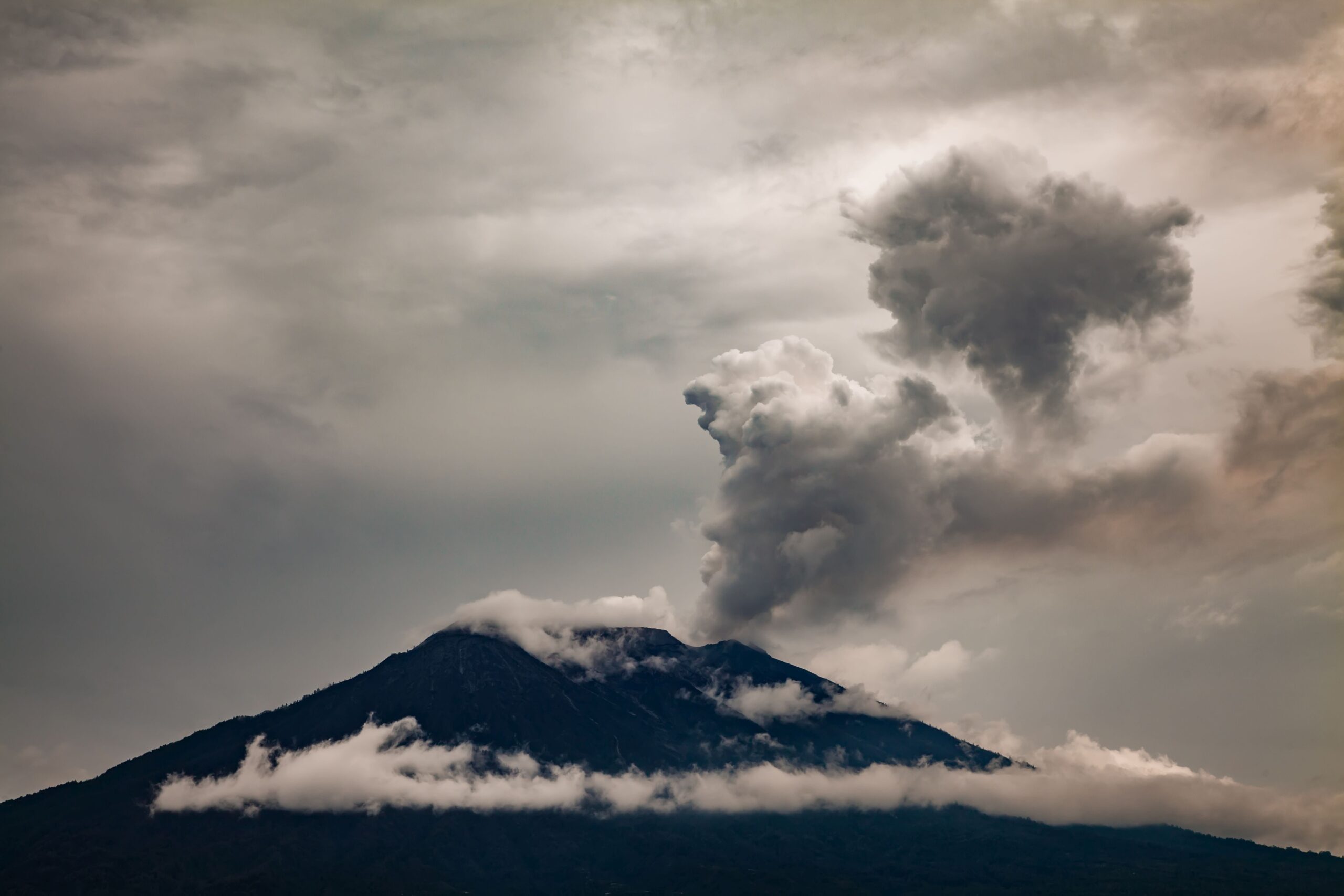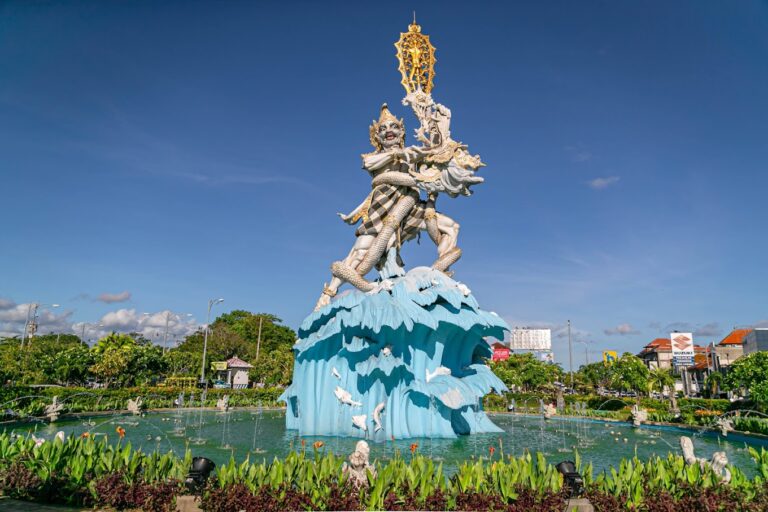Bali and Indonesia are in a part of the world known as the “Ring of Fire” and they are susceptible to earthquakes.
In order to ensure that your Bali holiday goes smoothly, even in the event of a natural disaster.
You should familiarize yourself with our brief guide to Balinese earthquakes and how to stay safe if one occurs.
What Is An Earthquake?
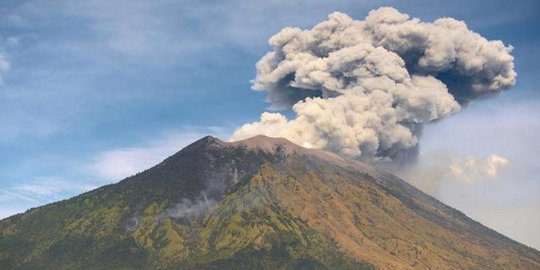
What Is An Earthquake?
An earthquake is what happens when the Earth’s surface begins to shake and it’s caused by the outer layer of the Earth rapidly moving backwards and forwards.
The more scientific explanation is that two blocks within the Earth are slipping past each other and the surface where the slipping takes place is known as a “fault plane”.
An earthquake begins at a particular point on the fault plane below the surface of the Earth known as the “hypocenter” of the earthquake.
The motion here is then spread to the rest of the surfaces that are slipping past each other and then this is transmitted to the surface.
The motion tends to be strongest directly above the hypocenter at a pint on the earth’s surface known as the “epicentre” of an earthquake.
It is possible for an earthquake to have “foreshocks” that is small earthquakes that build up to a larger one.
Unfortunately, it is impossible to know if a small earthquake is just a small earthquake or a foreshock until the larger earthquake either arrives or doesn’t arrive.
If there is a series of earthquakes, the largest earthquake is known as the “mainshock”.
Mainshocks almost always trigger further smaller earthquakes which are known as “aftershocks”.
Incredibly, aftershocks can continue to take place for weeks, months and sometimes, even, years after the event of the mainshock!
Of course, the stronger the mainshock, the longer the aftershocks will appear.
Why Does Bali Get Earthquakes?
Bali is part of what they call a “volcanic arc” that is a series of volcanoes (which aren’t limited to Bali in this case, the area also covers Sumatra, Nusa Tenggara, Java, the Sunda Strait and the Lesser Sunda Islands) that form a line over an area above a convergent boundary between “tectonic plates” (the bits of the Earth that slip over each other).
The volcanic arc that includes Bali is the Sunda Arc and it forms the border between the Australian Plate and the Sunda Plate.
(Note: The “Ring of Fire” simply refers to the volcanic activity within the region and there are other volcanic arcs involved not just the Sunda Arc).
The Australian plate is being driven under the Sunda Plate at a rate of just 7.5 cm a year! Unfortunately, when you consider just how big a tectonic plate is – that’s a huge amount of force even if it seems pretty slow.
Bali is in the worst position because the Sunda Arc is being thrust back in the direction of Bali and its neighbouring islands.
In fact, it’s not just Bali that gets earthquakes in this area, Lombok was hit by a series of earthquakes across the course of July and August 2018 and nearly 600 people were killed because of them.
A Brief History Of Earthquakes In Bali
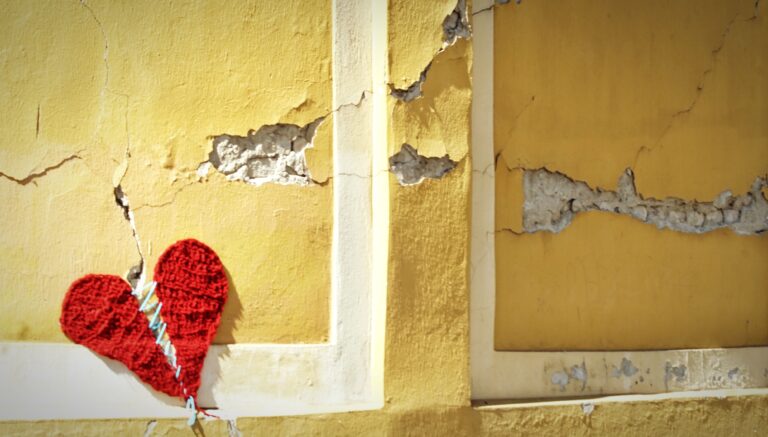
There are very minor earthquakes occurring all the time in the Ring of Fire but most of the time, they’re so minor that most people don’t even notice them happening.
We should note that there have been rising numbers of earthquakes in Bali in 2024 and in 2025, however, these earthquakes have been pretty trivial. With only a couple of them being strong enough to feel.
However, there have been plenty of bigger earthquakes in this region including in:
August 2023 – a 7.1 magnitude earthquake hit Bali
October 2021 – a relatively trivial 4.7 magnitude earthquake
October 2011 – a 6.1 magnitude earthquake
January 2004 – a 5.8 magnitude earthquake
December 1979 – a 6.3 magnitude earthquake
July 1976 – a 6.5 magnitude earthquake
January 1917 – a 6.6 magnitude earthquake
November 1815 – a 7.0 magnitude earthquake
It’s important to note that “magnitude” is measured on the Richter scale of earthquake strength and that is a logarithmic scale.
What that means in practice is that a magnitude 7 quake is many times stronger than a magnitude 6 quake, which in turn is many times stronger than a magnitude 5.
Anything under about magnitude 4 tends to be trivial and result in no real damage, though the ground may sway a little for a second or two.
It is also worth noting that most earthquake records in Bali, Indonesia and the rest of the world are very patchy.
The majority of these records are now generated by the US Geological Survey which was founded in 1879 but which has not had the technology or reach until fairly recently to cover the entire world’s surface with monitoring equipment.
Thus, many older Earthquakes are discovered in the historical record and then their magnitudes are estimated based on the reports of what happened at the time.
A Close Look At The 2021 Bali Earthquake
The Bali earthquake of 2021 is the best studied earthquake on the island, to date.
It was “just” 4.7 on the Richter scale but it struck at 4.18 a.m. on the 15th of October, 2021 when people were sleeping.
This resulted in four people dying and many more being injured.
The epicentre of this quake was above a shallow local fault between the slopes of Mount Agung and Mount Batur (Bali’s two active volcanoes).
It’s believed to have been caused by magma flowing along a shallow local fault line which then ruptured and triggered the earthquake.
This was very much unexpected as it has nothing to do with the usual fault line movements that trigger earthquakes in the area.
Despite it being a relatively mild earthquake, it was felt as far away as Lombok!
The deaths and injuries mainly occurred in villages near the fault line where buildings were damaged and pieces of debris fell on people either hurting or killing them.
762 buildings were damaged in this quake and nearly 101 of those had religious purposes.
The Latest Earthquake In Bali – 2023
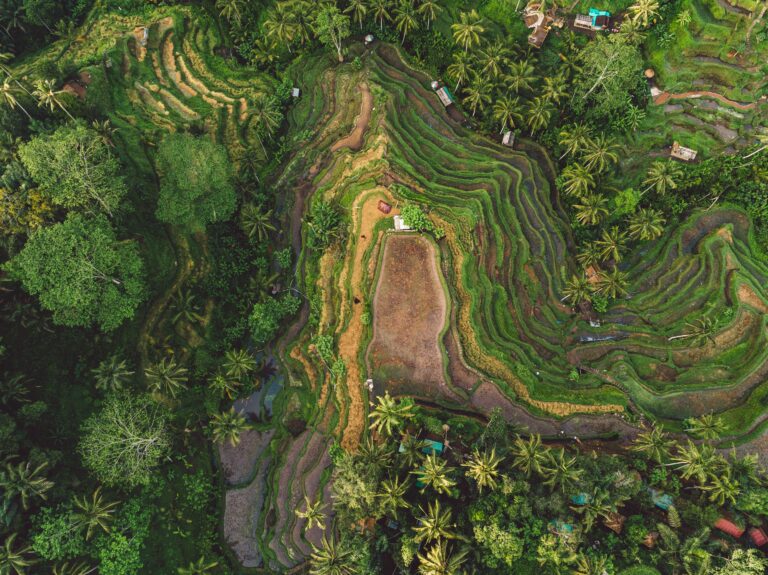
The earthquake in Bali in 2023 was much stronger than in 2021. It wa magnitude 7.1 and the earthquake was in Lombok.
It was followed by two reasonably powerful aftershocks. Yet, it did less damage than the 2021 quake.
According to the Bali Sun, the worst impact was that sleeping tourists were thrown into a state of confusion and fear for a short period of time.
How Do You Stay Safe In An Earthquake In Bali?
OK, so now we know that earthquakes do happen in Bali, but that they’re not all that common.
Sadly, there’s no way to accurately predict an earthquake, yet, and while you may get some warning of a quake in very specific circumstances, most of the time, you will not.
So, what do you do if there’s an earthquake while you’re on holiday in Bali?
Firstly, drop to your hands and knees, this will prevent you from being knocked over
Then, cover your head and neck, ideally crawl under a table or a desk, this means things are less likely to fall on you
Finally, hold on until the shaking stops
If you’re inside when it strikes:
Don’t run outside
Do move away from any objects that might fall on you if possible before the shaking gets worse
In the kitchen, if the stove is on, turn it off
If you’re near a bed, cover yourself with a blanket and put the pillow over your head to protect yourself against debris
Don’t stand in doorways, get under a table – the vast majority of earthquake deaths come from falling debris and tables offer the best protection
If you are in a high-rise building when it strikes:
Stay where you are and then follow the guidelines above
Stay away from the windows and outside walls
NEVER use an elevator, if the electricity goes out, you are stuck
If you become trapped, stay calm. Tap hard on metal if you can find it once the quake is over, it can help rescuers find you.
If you’re in a crowded place:
Don’t rush for the doors, most people will do this and it’s a recipe for injury
Move away from anything that can fall on you
Cover your head and face if possible
If you’re outside:
Move to the clearest spaces possible away from buildings, power lines, sinkholes, fuel lines, trees, etc. Your biggest danger is things falling on you
The most dangerous place to be is in front of a building’s outside walls, windows may explode and other architectural features can easily fall or break
If you’re in a car:
Park on the side of the road
Stay in the car, nothing is likely to fall on you that damages the car badly enough to hurt you
Switch on the radio for information
If power lines fall on the car, wait for assistance do not try and exi the vehicle
When you can move again, watch out for debris in the road and other earthquake-related issues
If you’re a wheelchair user:
Lock your wheels and dump anything that isn’t securely attached to the chair
Cover your head and neck with a pillow, a bag or anything that can help
If you can, get out of the chair and under a table or a desk
Outside, move away from anything that might fall on you and get into as much open space as possible
How Likely Is An Earthquake To Trigger A Tsunami In Bali?
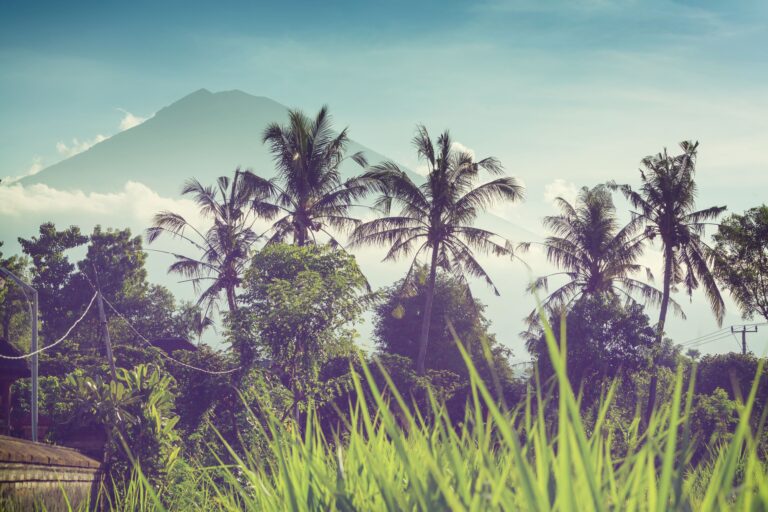
Tsunamis are triggered by earthquakes, however, they are much rarer than earthquakes and a tsunami may be triggered by an earthquake that is not even felt in Bali.
The 2004 Asian tsunami, for example, was triggered by a huge earthquake in Aceh, Indonesia.
The interval between destructive tsunamis in any part of Indonesia is just two years!
However, the interval between a tsunami striking one part and then striking the same part again is between 30 and 300 years.
Thus Bali isn’t due for a tsunami any time soon. That doesn’t mean that it can’t happen, it just means it’s unlikely to happen.
If a tsunami does happen then the areas at most risk are Kuta and Sanur.
How Do You Stay Safe If A Tsunami May Hit Bali?
There’s not a huge amount you can do but you should if an earthquake lasts for more than 20 seconds:
Either move inland at least 2 miles from the coast or get to a point at least 100 feet (30 meters) above sea level
Don’t drive, walk and don’t use elevators either if you intend to use a high-rise building for cover against a tsunami, climb the stairs
Earthquakes And Travel Insurance In Bali
Not all travel insurance includes coverage for natural disasters. We would strongly recommend that all visitors to Bali make sure that they have coverage for natural disasters.
We think that a natural disaster that isn’t limited to earthquakes and tsunamis and includes flooding, volcanic eruptions, etc. is the biggest risk most holidaymakers face.
This is true, even though, 99.9% of holidaymakers in Bali will never have an issue with a natural disaster.
FAQs
When Was Bali’s Last Earthquake?
The last major earthquake was in 2023 and had a magnitude of 7.1. There are regular minor earthquakes throughout this region and they often go completely unnoticed.
Are Earthquakes Common In Bali?
Yes. Earthquakes are very common throughout the Ring of Fire. However, severe earthquakes are something of a rarity. And not every severe earthquake leads to loss of life, etc.
Is Bali At Risk Of Tsunami?
Yes, anywhere that is subject to earthquakes offshore and which is on the coast is at risk of tsunamis.
Bali was badly impacted by the Indian Ocean tsunami of 2004. However, tsunamis are a rarer event than earthquakes.
Was The Bali Earthquake Felt In Australia?
The 2023 earthquake in Bali was felt in the Northern Territory of Australia as confirmed by the Bureau of Meteorology.
Final Thoughts On Earthquakes In Bali
It’s true, that earthquakes in Bali are a fact of life but that doesn’t mean that you should cancel your holiday plans.
Serious earthquakes are rare on the island and if one does take place, you should be able to protect yourself by following some simple steps to do so.
And while, yes, an earthquake can trigger a tsunami in Bali, tsunamis are much rarer than earthquakes.
Almost all holidays in Bali go without any kind of natural disaster occurring and if you have decent travel insurance, any inconveniences you face in the event of such a disaster will be minimal.

